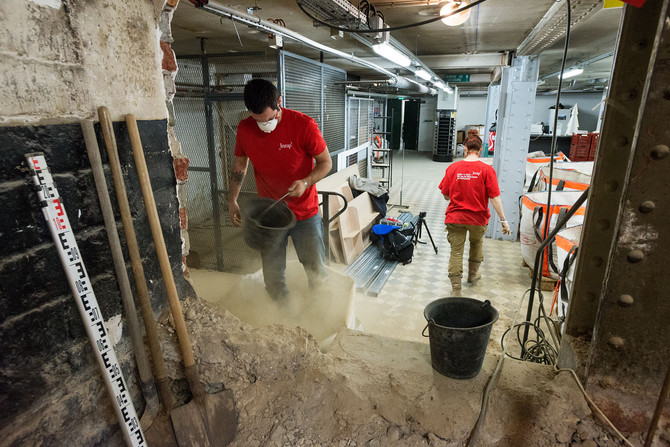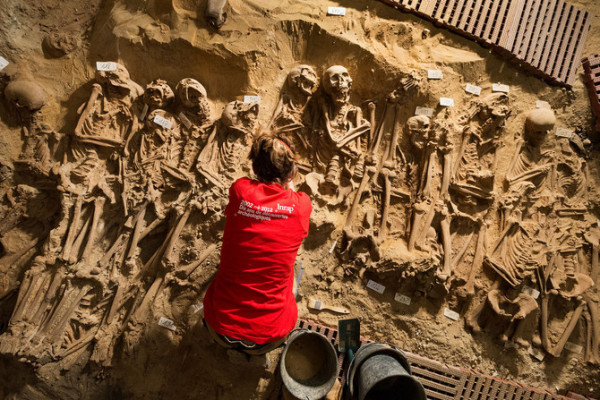Forensic Case Files: Medieval Cemetery Discovered Under a Parisian Supermarket
/
Recently, a surprising discovery was made in the basement of one of Paris’ Monoprix supermarkets. During some renovation work to lower the level of the basement (two full floors underground) to create additional storage space, a number of human remains were discovered beneath the floor, previously undisturbed since medieval times. Inrap, the French Institut National de Recherches Archéologiques Préventives, was called in to examine the find and then to do a full excavation before any renovation work would continue.

But how did so many human remains come to be found under an ordinary supermarket? In the end the answer was a simple one of land usage: the supermarket was built on the site of the cemetery of Hôpital de la Trinité. Trinité was established in the 12th century, but was destroyed at the end of the 18th century, allowing the land to be repurposed following the hospital’s demolition.
As the excavation space was cleared, eight separate graves spread over three parallel rows were discovered. Seven of the graves held two to five bodies, and one grave held over one hundred and fifty. Each grave was layered in five or six levels and part of the excavation disappears under the existing building wall, out of reach of archeologists.
The remains comprise a diverse group of male and female, children and adults of all ages. The skeletons are laid very closely together, arranged in alternating head to toe pattern to maximize the number buried in a small space. From this arrangement, Inrap archeologists propose that a ‘mass mortality crisis’ occurred, requiring a rapid and common burial. There are no injuries on any of the bones to explain any kind of violent death, implying that disease is responsible. The Bubonic plague epidemic of the late 1340s is one of the suggested causes; large-scale famine is another. Scientists are conducting DNA tests on the remains as well as carbon dating to obtain a more complete picture of catastrophe.

Inrap archeologists excavated the more than 1,000 square-foot site for two and a half months to remove all the remains. They hope to continue their study of the dead following the excavation with the hope of learning more about past burial practices―how the dead were added to the grave, the spatial and chronological organization, and sanitary criteria during an epidemic.

Much of Paris has been occupied since the Middle Ages, but due to dense population and building within the city, it is only when construction or renovation work reveals the city’s hidden dead that archeologists can shed light on Paris’ distant past. As a result, the Monoprix site is a wonderful opportunity for French archeologists, having only had twelve previous sites with which to study early funereal practices. Archeologists feel that work on this site could shed much light on not only how the Medieval French lived, but also how they died.
Photo credit: Denis Gliksman, Inrap



 2.1%
2.1%